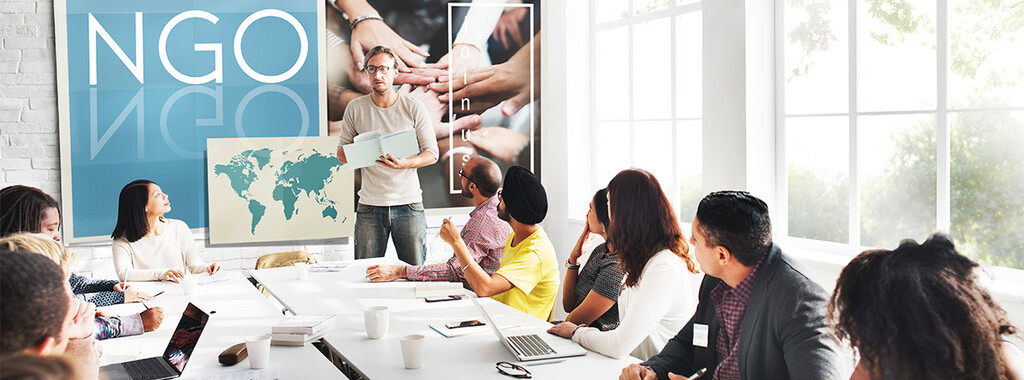Sioen’s partnership with NGOs is a two-way street of information flows

Collaboration with NGOs
Sioen collaborates with NGOs, mostly as part of EU-level projects. In other cases, Sioen provides useful insights and information to NGOs and in the opposite direction, Sioen also receives helpful information from NGOs that helps us succeed in the sustainable projects we are working on.
NGOs
According to the American Psychological Association, a non-governmental organisation (NGO) is a “non-profit, voluntary citizens’ group, which is organised on a local, national or international level to address issues in support of the public good”.
NGOs have become essential actors in the social field, including the fight against poverty and social exclusion, in fighting global warming and in protecting the planet.
Well-known examples of NGOs are Greenpeace, the Red Cross, Doctors Without Borders and the World Wildlife Fund (WWF).
A valuable partnership
Throughout the years, we have collaborated with NGOs such as Greenpeace, Doctors Without Borders, the Red Cross, etc. These collaborations mostly are part of larger EU projects, in which both the NGO and Sioen play a role. Another possibility is when Sioen asks for advice from certain NGOs.
For example, for the ‘AT~SEA’ project, Sioen asked the World Wildlife Fund what aspects were important to them. We learned that we should not create shadows and that we should make sure that no fibres end up in the water, among others. Of course, NGOs can always come to us with questions our R&D team can solve for them. This is a two-way street of valuable information flows that helps the NGOs, Sioen and most importantly, the sustainability projects we are working on.
Bert Groenendaal, R&D Project Coordinator at Sioen, has “always attached a lot of importance to those contacts with NGOs. It is foremost a knowledge exchange. For some projects, we have weekly contacts with the NGOs in questions or at least 1 contact every few weeks. It all depends on which projects we are working on. In some projects, the collaboration is very intensive.”
Projects
Throughout the years, we have collaborated with a range of NGOs in different projects. Two examples are given in the next paragraphs.
For the EU Speedkits project, for example, we collaborated with the Netherlands Red Cross, the Shelter Research Unit of the International Federation of Red Cross and Red Crescent Societies, Médecins sans frontiers Operational centre Amsterdam, among others. With this project, we created the emergency tent of the future.
A different project is the European ‘AT~SEA’-research project that aims to develop advanced technical textiles in order to demonstrate the technical and economical feasibility of open sea cultivation of macroalgae/ seaweed. We collaborated with the WWF, and we invited them to our events.
In early December 2020, we have joined ‘The Synergist’, a collaborative and neutral platform that “brings together complementary people, organisations, and institutions to focus on solving societal issues both personally and with technology tools.” This will certainly induce new partnerships.
Sustainable Development Goals
With these partnerships, Sioen helps realising SDG 17: “Strengthen the means of implementation and revitalise the global partnership for sustainable development.” Especially targets 17.16 and 17.17 are what we are working towards with our partnerships with NGOs.
For target 17.16, we should “enhance the global partnership for sustainable development, complemented by multi-stakeholder partnerships that mobilise and share knowledge, expertise, technology and financial resources, to support the achievement of the sustainable development goals in all countries, in particular developing countries.” Target 17.17 states that we should “encourage and promote effective public, public-private and civil society partnerships, building on the experience and resourcing strategies of partnerships.”

